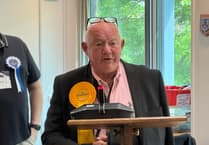One of the UK’s rarest butterflies is making a welcome comeback to its Dartmoor stronghold, wildlife charity Butterfly Conservation has revealed.
Annual monitoring of the High Brown Fritillary across Dartmoor shows the species is having an excellent year with strong numbers recorded at known locations as well as several sightings at new or historically occupied sites. Surveys record a 93% increase in numbers.
The High Brown Fritillary was once widespread in England and Wales but since the 1950s has undergone dramatic decline, with a massive 96% reduction due to changes in land management, lack of management and spreading of scrub. The lack of links between habitats also caused small pockets of isolated populations which could not thrive. The butterfly is now only found on Dartmoor, Exmoor, Morecambe Bay, and South Wales.
The work is being rewarded; the High Brown Fritillary has responded well, and its threatened status has been reduced from ‘critically endangered’ to ‘endangered’ in the new 2022 Red List published in May this year, which assesses the extinction risk for British butterfly species.
Jenny Plackett, South West regional conservation manager for Butterfly Conservation, said: ‘It’s fantastic that the High Brown Fritillary is continuing to thrive on Dartmoor, and responding well to conservation efforts. This year’s warm and sunny weather will have really helped and may have enabled the butterfly to expand to colonise new sites nearby – we’ll be monitoring closely.’
High Brown Fritillaries are large, and powerful butterflies, who are found in bracken-dominated habitats where their caterpillar foodplant, common dog-violet, is abundant. They fly during June and early July and are best seen at rest when feeding on nectar from favourite foodplants like brambles and thistles.
The upturn in its fortunes began several years ago with the introduction of intensive conservation activity across the ancient landscape. On Dartmoor, conservation work has brought together a range of organisations and individuals including Dartmoor’s farmers, Devon Wildlife Trust, Dartmoor National Park Authority, Natural England, The National Trust, and Butterfly Conservation.
They have worked together to manage the bracken habitats to create suitable conditions for breeding. This includes creating clearings and tracks in dense bracken, enabling butterflies to feed on violets for food and to lay eggs. Dartmoor commoners have helped by by grazing cattle here.
Dartmoor National Park Authority ecologist Richard Knott said: ‘Keeping the habitat suitable for these butterflies and other species requires traditional grazing by cattle and ponies. The success is due to the hard work of Dartmoor’s farmers who maintain these areas anddue shows the value of coordinated partnership working at a landscape scale.’





Comments
This article has no comments yet. Be the first to leave a comment.